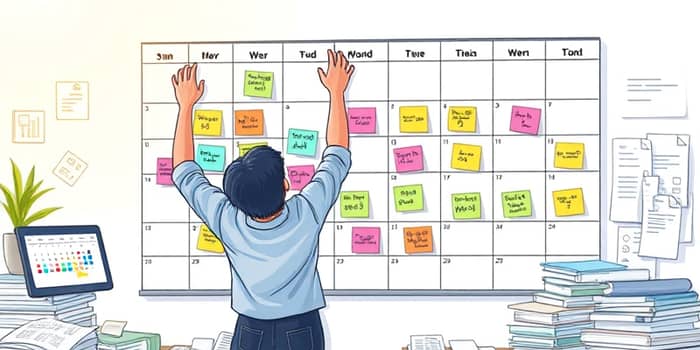
Managing money can feel overwhelming when deadlines sneak up unexpectedly. By integrating every key financial task into your personal calendar, you gain clarity, confidence, and control over your future.
A proactive, organized schedule transforms vague intentions into actionable steps. Instead of relying on memory, you’ll have clear prompts for everything from tax filings to insurance renewals. A calendar helps you view your annual obligations at a glance, reducing stress and ensuring time-sensitive financial tasks are never missed.
For financial advisors, a shared calendar offers clients visible, scheduled service delivery—from quarterly reviews to portfolio rebalancing—highlighting the value you provide beyond meetings.
Start with an annual overview of recurring events:
Next, establish quarterly check-ins to revisit goals, budgets, and performance. Then schedule monthly tasks like bill payments, expense tracking, and credit monitoring. Finally, add trigger-based actions tied to life events—such as college funding or retirement planning—to stay ready for any financial turning point.
Digital calendars like Google Calendar or Outlook allow you to set recurring events, share schedules with partners or advisors, and sync across devices. Enhance functionality with add-ons such as Checker Plus for instant reminders and fast event creation.
For a truly paperless workflow, attach scanned documents and receipts directly to each calendar event. Platforms like Evernote or OneNote can centralize your financial files, ensuring you access tax forms, insurance policies, and investment statements whenever needed.
Follow these simple steps to launch your personalized financial calendar:
Advisors can further strengthen relationships by sharing a “client service calendar,” mapping every deliverable—research, rebalancing, compliance work—to specific dates, showcasing the full scope of their expertise.
Relying solely on memory often leads to missed renewals or late payments, triggering fees and penalties. Combat this by scheduling brief, weekly sessions—just 30 minutes—to update your calendar and scan new documents.
Life changes—marriage, home purchase, a new child—should immediately prompt a calendar review. Adjust deadlines, notifications, or savings targets to align with your evolving needs.
Set a recurring annual reminder to review and update your entire calendar. Reflect on what worked last year, adjust for upcoming events, and refine your strategy. This regular maintenance turns your calendar into a living blueprint for financial success.
For advisors, quarterly coach-style check-ins reinforce accountability and demonstrate ongoing commitment to client goals, making sure no detail falls through the cracks.
By syncing your financial plan with your calendar, you unlock greater financial confidence and peace of mind. Knowing exactly when each task is due empowers you to act early, optimize opportunities, and avoid costly mistakes.
Whether you’re an individual shaping your future or an advisor guiding clients toward their dreams, a well-crafted financial calendar is your roadmap to consistent progress.
Create your financial calendar now: gather your obligations, choose your digital tool, and schedule your first tasks. In just a few hours, you’ll have an actionable, time-based plan that sets you on the path to long-term financial wellbeing.
References













